Beretta M9A3 Type G 9mm Pistol 17 Round, Black and Gray – J92M9A3GM3 For Sale
$949.99
Is the Beretta M9A3 discontinued?
Yes, the Beretta M9A3 has been discontinued.
Why did the army reject the M9A3?
The U.S. Army rejected the M9A3 in favor of exploring a new handgun program due to several reasons:
1. **Modernization Objectives**: The Army wanted a more modern and modular handgun system that could enhance performance and meet new requirements, which led to the decision to pursue the Modular Handgun System (MHS) program.
2. **Capability Requirements**: The M9A3 was a proposed upgrade to the existing M9, but the Army sought significant improvements in areas like accuracy, reliability, ergonomics, and adaptability to different mission needs.
3. **Increased Competition**: By opening up the program to other manufacturers through the MHS initiative, the Army could leverage newer technologies and innovations rather than being limited to an upgraded existing platform.
These reasons contributed to the Army moving on from the M9A3 upgrade proposal to seek newer alternatives, ultimately leading to the adoption of the SIG Sauer P320, designated the M17/M18, as the new standard service pistol.
What is the difference between M9A3 and M9A4?
The M9A3 and M9A4 are both variants of the Beretta M9 pistol, which is widely used by military and law enforcement. Here are the key differences between the two:
1. **Red Dot Sight:** The M9A4 is designed with a red dot optic compatibility, featuring a slide cut to accommodate red dot sights. The M9A3 does not have this feature, which is one of the most notable advancements in the M9A4.
2. **Barrel:** Both pistols typically have a threaded barrel for suppressor attachment; however, any specific enhancements in the M9A4 regarding barrel design can further support its adaptability with optics.
3. **Sights:** The M9A4 includes a dovetail configuration that allows for easy replacement or upgrading of sights, while the M9A3 has a standard fixed front sight.
4. **Grip Texture and Options:** The M9A4 might come with updated grip options or textures aimed at improving user comfort or handling.
5. **Color and Finish:** While both models have similar overall design, any introduction of new color schemes or finish enhancements in the M9A4 might differentiate it aesthetically from the M9A3.
6. **Operational Improvements:** The M9A4 could include other subtle enhancements or components designed for modern operational needs that are not in the M9A3.
Overall, while many aspects of the M9A3 and M9A4 remain similar due to their shared lineage, the M9A4 primarily focuses on upgrades that enhance modern tactical capability, especially with the inclusion of optic-ready features.
Is Beretta M9 better than 92FS?
The Beretta M9 and the Beretta 92FS are very similar pistols with slight differences. The M9 is the military version of the Beretta 92FS and includes minor variations to meet military specifications:
1. **Markings**: The M9 has military-specific markings and designations, which are absent in the commercial 92FS.
2. **Safety/Features**: The M9’s safety lever can vary depending on the military branch and contract requirements, while the 92FS has a consistent safety design.
3. **Magazines**: The M9 might come with different magazine designs or construction materials, again based on military contracts.
4. **Backstrap Profile**: The M9 typically features a straight backstrap, whereas earlier models of the 92FS had a slightly curved backstrap.
The performance differences between the two are negligible for most users. The choice between them often comes down to personal preference, intended use (civilian vs. military), and availability. Therefore, whether the M9 is “better” than the 92FS depends on your specific needs and context.
What Beretta did the Navy SEALs use?
The Navy SEALs used the Beretta M9 as their standard sidearm. It is a 9mm semi-automatic pistol that has been widely used by various branches of the U.S. military. However, SEALs have been known to use other firearms as well, depending on mission requirements.
Why is Beretta so expensive?
Beretta firearms tend to be expensive due to several factors:
1. **Quality and Craftsmanship**: Beretta is known for its high-quality materials and meticulous craftsmanship. The precision engineering and attention to detail in their firearms contribute significantly to the cost.
2. **Heritage and Reputation**: As one of the oldest firearms manufacturers in the world, Beretta has built a strong reputation for reliability and performance over its long history. This brand prestige often commands higher prices.
3. **Innovation**: Beretta invests heavily in research and development to innovate and improve their product lines, incorporating advanced technologies and materials.
4. **Made in Italy**: Many Beretta firearms are manufactured in Italy, where production costs, including labor and materials, may be higher compared to other parts of the world.
5. **Customization and Limited Editions**: Some Beretta firearms have options for customization or are released as limited edition models, which can increase their value due to exclusivity.
6. **Performance**: Beretta firearms are praised for their performance, accuracy, and longevity, attributes that often justify a higher price point for consumers seeking premium products.
These factors together contribute to the higher cost of Beretta firearms compared to some other brands.
What year did the Beretta M9A3 come out?
The Beretta M9A3 was released in 2015.
Why did the military stop using the Beretta M9?
The U.S. military began phasing out the Beretta M9 pistol in favor of the Sig Sauer P320, designated as the M17 (full-size) and M18 (compact) under the Modular Handgun System (MHS) program. The transition was primarily due to several reasons:
1. **Modularity**: The P320 offers greater modularity, allowing for easier customization and adaptability to different hand sizes and mission requirements.
2. **Improved ergonomics and performance**: The P320 provides enhanced ergonomics, better grip, trigger system, and overall performance, which were considered improvements over the M9.
3. **Maintenance and durability**: The P320 is designed to be easier and cheaper to maintain with improved durability and reliability, especially under harsh conditions.
4. **Caliber options and ammunition**: While the M9 is chambered in 9mm, the P320 also supports other calibers, providing flexibility for various military needs.
5. **Technological advancements**: The new system includes features like ambidextrous safety, better sights, and compatibility with modern attachments.
Overall, the decision to replace the M9 was driven by a desire to modernize the standard-issue sidearm of the U.S. military, ensuring that it met contemporary standards and operational requirements.
Does the M9A3 have a safety?
Yes, the M9A3 does have a safety. It features an ambidextrous manual safety/decocker lever.
How accurate is the Beretta M9A3?
The Beretta M9A3 is known for its impressive accuracy, thanks in part to its improved design over previous models. It features a 5.2-inch barrel and a redesigned frame that enhances its stability and precision. The pistol is often praised for its consistent shot placement and effective range, which is typically around 50 yards for practical use, though skilled shooters may achieve accuracy at greater distances. Additionally, the M9A3’s threaded barrel allows for the attachment of suppressors, which can also help improve precision by reducing muzzle rise and recoil.
Is the M9A4 decocker only?
Yes, the Beretta M9A4 features a decocker-only configuration.
What is the effective range of the Beretta M9A3?
The effective range of the Beretta M9A3 is approximately 50 meters (about 55 yards).
Is Beretta better than Sig Sauer?
The question of whether Beretta is better than Sig Sauer depends on various factors and personal preferences. Both companies are renowned firearm manufacturers with strong reputations for quality, reliability, and performance. Here are some factors to consider:
1. **Purpose**: Are you looking for a firearm for self-defense, competition, law enforcement, or military use? Different models from each manufacturer may excel in different areas.
2. **Models**: Beretta is well-known for its pistols, such as the Beretta 92 series, while Sig Sauer is famous for the P320 and P226 among others. Each model has its own strengths and weaknesses.
3. **Ergonomics**: Personal comfort and fit are crucial. Some users may find Beretta pistols more comfortable to handle, while others might prefer Sig Sauer’s grip and ergonomics.
4. **Performance**: Both brands offer reliable and accurate firearms, but subtle variations in action, trigger feel, and recoil can influence user preference.
5. **Price and Value**: Sig Sauer is often perceived as a premium brand with higher price points, whereas Beretta may offer more budget-friendly options without compromising quality.
6. **Aesthetics and Heritage**: Some prefer the design and history associated with Beretta, while others might favor Sig Sauer’s modern approach and innovations.
Ultimately, the “better” brand is subjective and varies based on individual needs and tastes. If possible, handling and testing firearms from both manufacturers could help in making a more informed decision.
What are the flaws of the Beretta M9?
The Beretta M9, a standard-issue sidearm for the U.S. military for several decades, has received both praise and criticism. Here are some commonly cited flaws of the Beretta M9:
1. **Size and Weight**: The M9 is relatively large and heavy compared to many modern handguns, which can make it less comfortable to carry and handle, especially for soldiers who need to carry it for extended periods.
2. **Ergonomics**: The grip size can be bulky for individuals with smaller hands, making it harder to handle and shoot comfortably for all users.
3. **Trigger Action**: The double-action/single-action trigger requires a heavier pull for the first shot, which can affect accuracy and speed for the first round fired.
4. **Stopping Power**: The M9 uses a 9mm round, and some critics argue that it lacks the stopping power compared to larger calibers preferred by some in tactical situations.
5. **Durability Issues**: Early models experienced issues with durability, such as slide failures, although most of these concerns were addressed in later versions.
6. **Magazines**: The standard issue magazines were initially prone to reliability problems under sandy or dirty conditions, though this was largely resolved with better-quality alternatives.
7. **Safety Mechanism**: The safety/decocker can be awkward to manipulate quickly under stressful conditions, which might slow down the user’s response time in emergent situations.
8. **Replacement Parts and Upgrades**: The design is somewhat dated, which means that modern tactical enhancements and modular customization can be more limited compared to newer models.
Despite these flaws, the M9 has been widely used and trusted for its accuracy and overall reliability over many years of service.
What is the most reliable Beretta handgun?
The Beretta 92FS is often considered one of the most reliable Beretta handguns. It’s known for its durability, accuracy, and has been widely used by military and law enforcement agencies around the world. However, reliability can vary based on specific needs and conditions, so it’s always a good idea to try different models to see which one best suits your requirements.
Be the first to review “Beretta M9A3 Type G 9mm Pistol 17 Round, Black and Gray – J92M9A3GM3” Cancel reply
Related products
Beretta M9A3
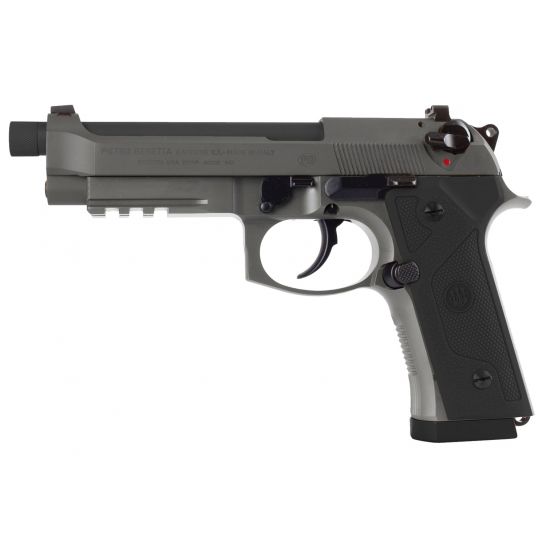
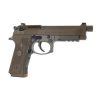
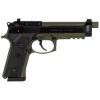
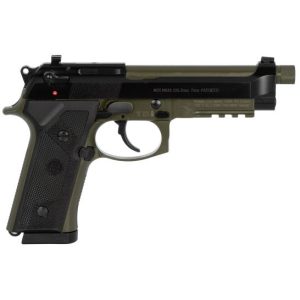
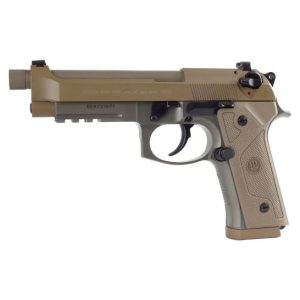
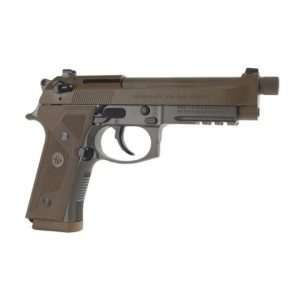
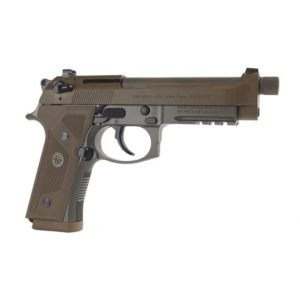
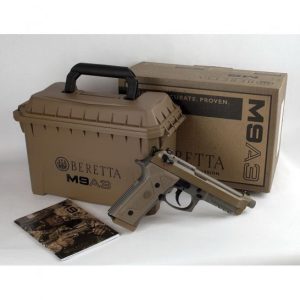
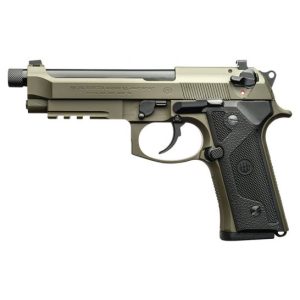
Reviews
There are no reviews yet.